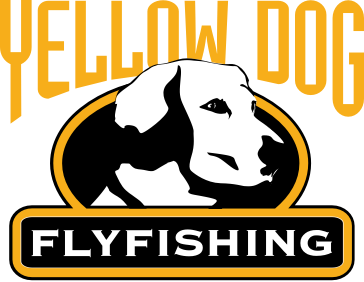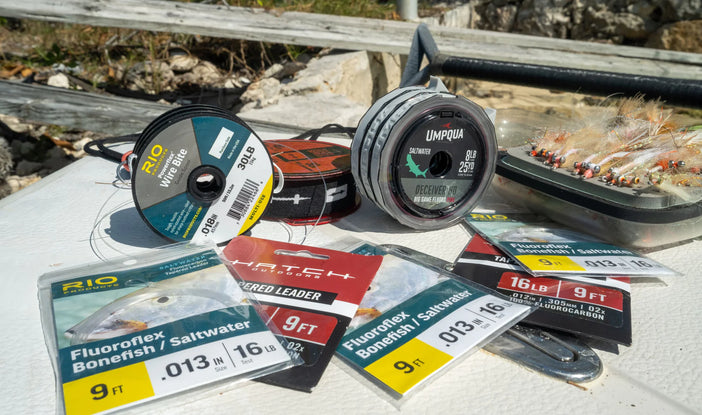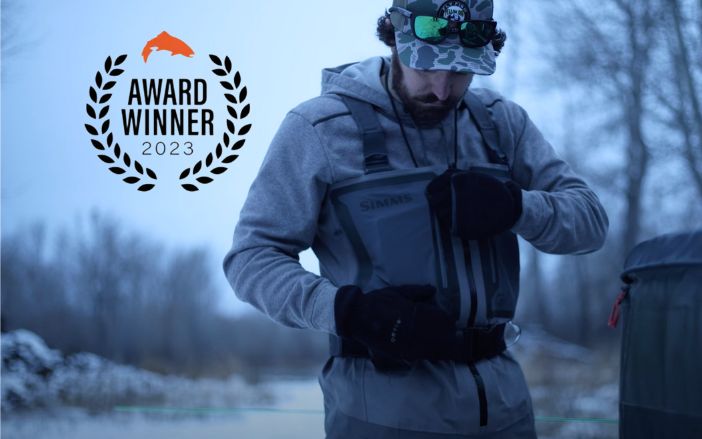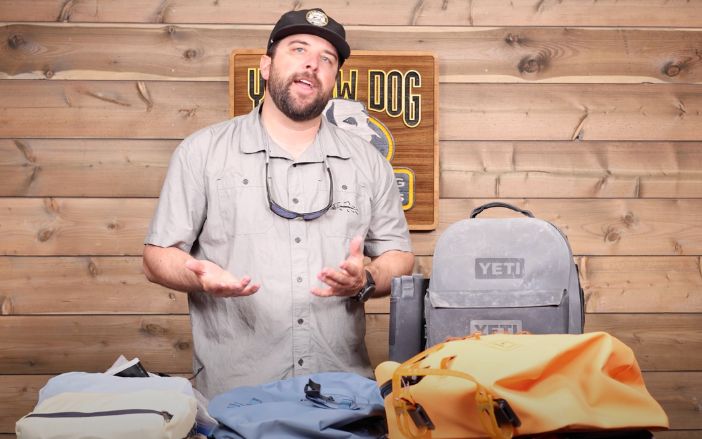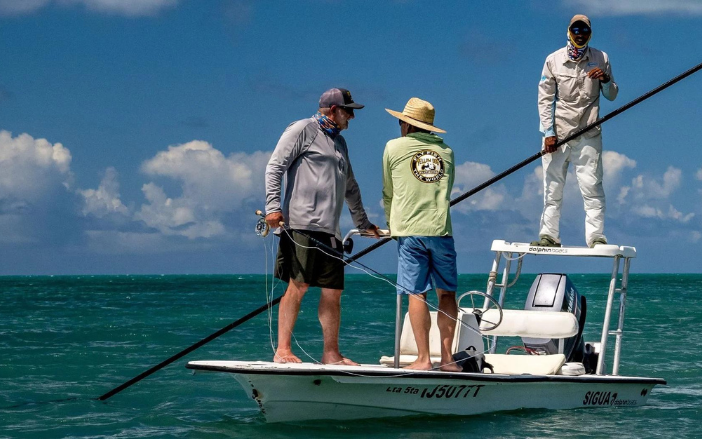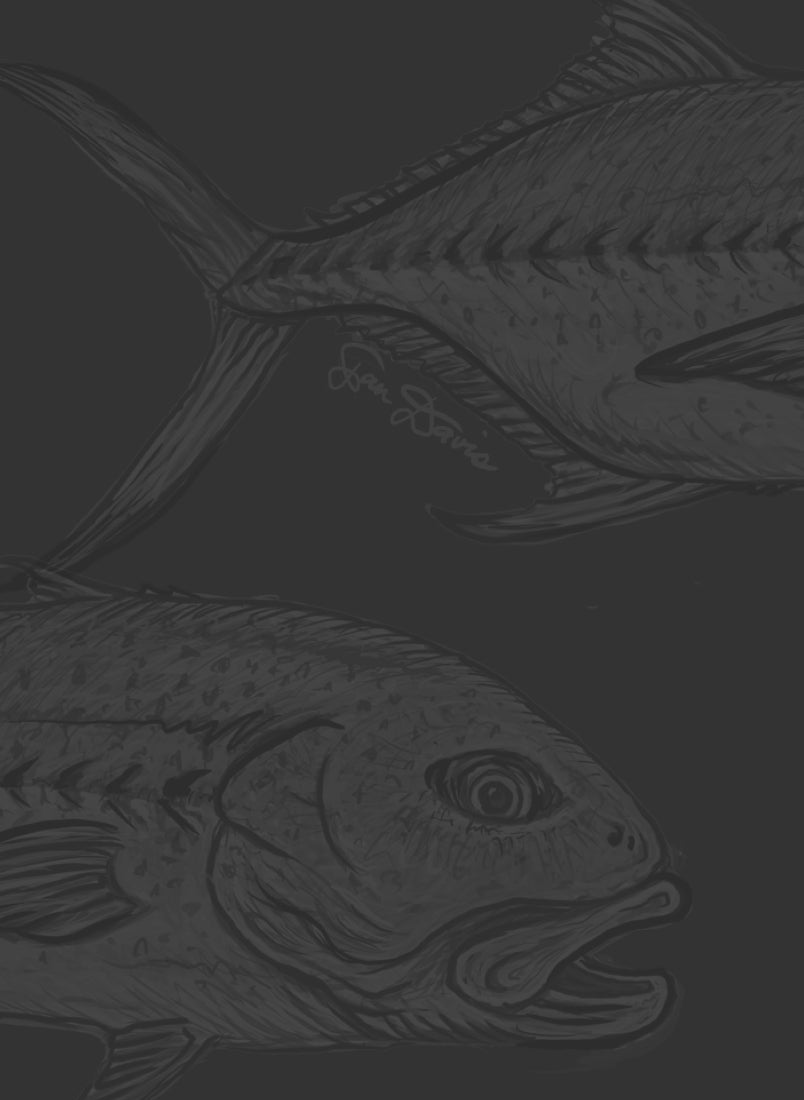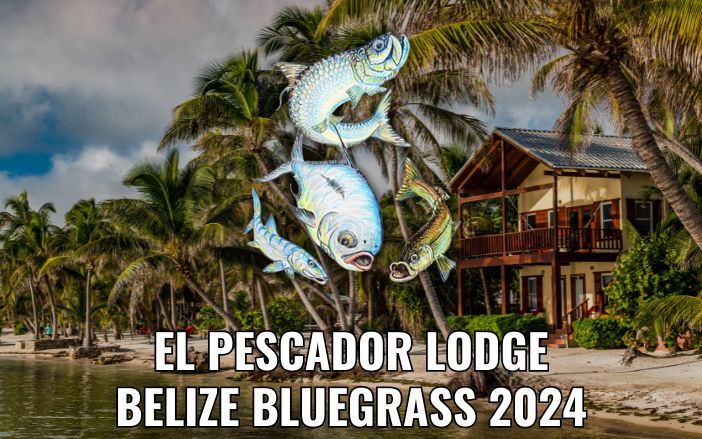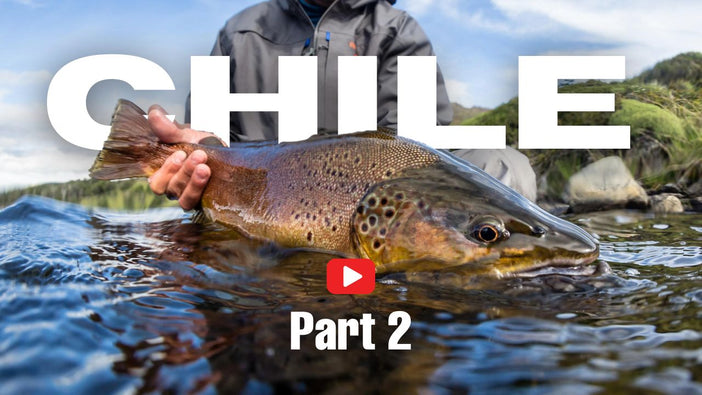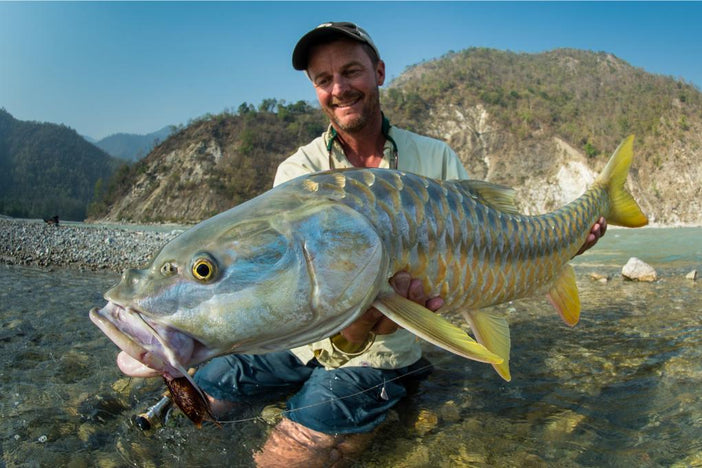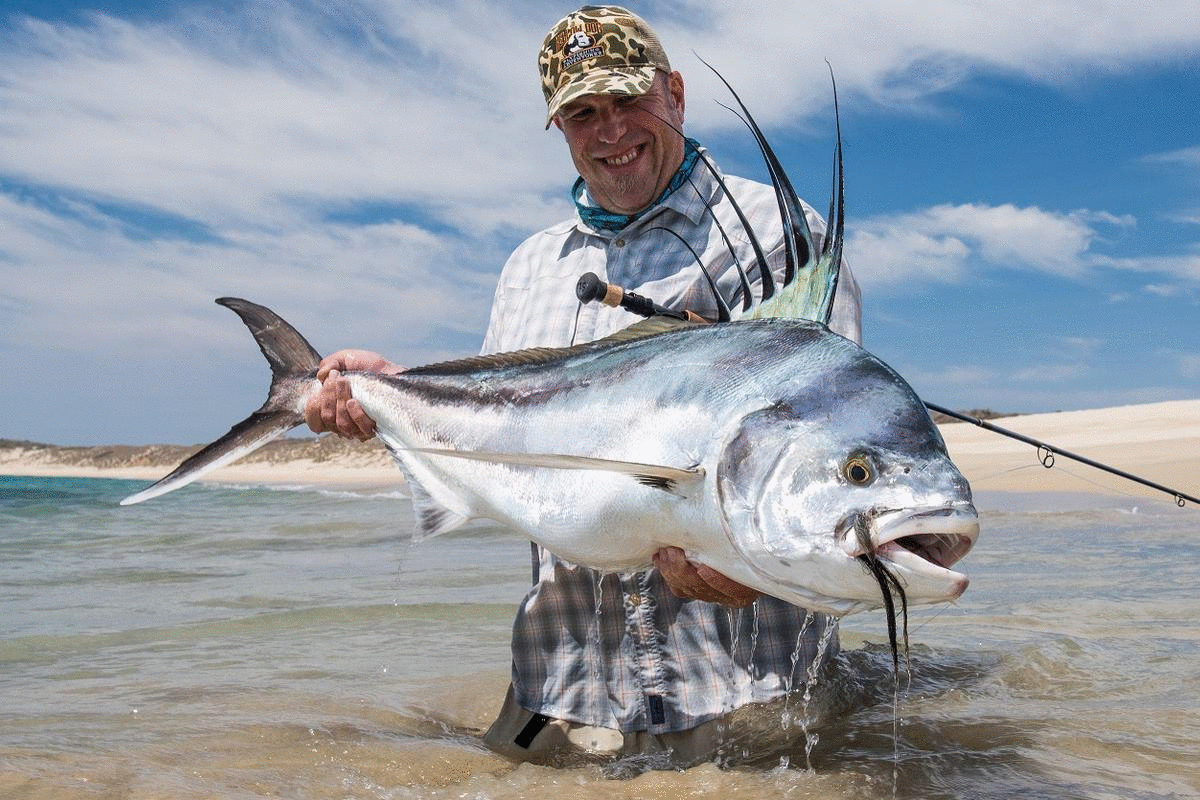Saltwater fly fishing can take you to some beautiful places. With its beaches framed by bluffs and cliffs, Mexico’s Baja region is one of these places. For anglers aware of the thrill of fly fishing for roosterfish, this region has been known for years. But for anyone seeking a new angling adventure that can involve fast-paced action and accurate casts in pursuit of trophy-sized fish, a fly fishing trip for roosterfish may be the next angling adventure.
About The Species
Unmistakable because of their expansive comb dorsal fin and found only in the tropical waters of the eastern Pacific Ocean, roosterfish are a one-of-a-kind-gamefish. Ranging from Baja Mexico south to Peru, these fish are climbing angler’s wish lists…and climbing fast.
The 'beach fishing game’ is simple yet demanding: roosters cruise the shallow water off beaches, anglers acting more like hunters must be focused and stealthy. When a foraging rooster is spotted, an angler must remain calm and collected while tapping into their own inner-predatory instincts. It often demands sprinting into casting range, then firing every cast possible to a fish, including a potential neck-deep double-haul while crashing waves slam saltwater in your face. Oh yeah, it is like that.

But, polished stalking and angling skills, along with a sense of adventure, are not the only keys to success. Patience and humility run neck-and-neck with technical ability—roosterfish are earned after long hours in the bright sun scanning for cruising fish. As quickly as an opportunity happens, it can fade. These predators will slip away into deeper water if they sense anything unusual.
Roosters can also be targeted in deeper water out of a super panga where the guides use live bait and teasers to bring to the surface. Targeting roosters in this manner is a bit easier on the angler but the fish can be more selective.
Fly fishing for roosterfish is the pinnacle of angling patience, fly-fishing ability, and resolving complex chaos theory. And it all finishes well in the angling world because each day ends with a sunset and a few cold cervesas.
Where are they found?
Roosters, as unique as their range, are only available to fly anglers in a few destinations. Mexico’s Sea of Cortez is recognized as the penultimate proving ground for finding a roosterfish that will crush a fly. However, some of the largest roosterfish have been found along the coasts of Costa Rica and Panama, but very few of them caught on a fly rod there due to the fact the roosters tend to congregate around structure with surf.

A few of our Yellow Dog Ambassadors have heard stories of fly rod-able roosters off remote beaches in Colombia, Ecuador, and Peru, but fly fishing for roosterfish is still relatively new.
Why do anglers target them?
When hooked, roosterfish don’t fight, they brawl. These fish crush baitfish—usually small sardina—in shallow water. After feeling the steel hook penetrate their boca (mouth) they burst into gear-busting long and fast runs. If the fight isn’t enough, the scenery and exciting wade-fishing opportunities are reason enough to pursue these Pacific Ocean torpedoes.
What distinguishes roosterfish from other species?
With their majestic comb and distinct black stripes they have one of the most majestic and exotic appearances of any saltwater gamefish on the planet. They live in spectacular habitats of aquamarine waters surrounded by crashing waves, rocky bottoms, and beaches usually backdropped by spectacular mountains.

They are apex predators, which means they aren’t afraid to eat a fly…but when they are available in shallow water they are often on edge, acutely aware of anything bigger than themselves. When chasing bait to fill their stomachs, roosters will dart and dive and change directions multiple times. They don’t tail, they announce their presence with authority, and they fight hard. Small ones jump and big ones run long and mean.
Flies for Roosterfish
An angler would think an apex predator such as a roosterfish would crush any fly in its wheelhouse, but, matching the available baitfish is very important. When fishing from the beach, roosters are more likely to hit a well-placed fly than when cast to from a panga—22 to 28 feet fishing boats used by local guides.

Small roosters usually feed on sardines and needlefish. Larger roosters want mullet, lady fish, mackerel, caballitos, and on some occasions will eat ballyhoo. These baitfish are all approximately 4 to 7 inches long, with some beach-cruising baitfish up to twelve inches. Choose colors to match the baitfish—sardines, ballyhoos, and mullet—in the area. If targeting fish from the beach, a mullet pattern with a spun deer hair head is a good first choice.
Here is a must-have list of flies to carry:
EP Rooster Fish Mullet. Size 3/0 and 4/0. The 4/0 mullet is THE beach fly for roosters.
EP Rooster Fish Sardina. Standard and tan size 3/0
EP Sardina. Size 3/0
EP Tinker Mackerel. Size 3/0
Best Gear for Roosterfish
A stout rod and sturdy reel are essential. Many anglers use a 10 or 11-weight rod armed with a matching reel. Ensure the reel is loaded with at least 300 yards of durable 30 to 50-pound test backing. An 8-weight rod and appropriate reel with at least 300 yards of backing are good to have for smaller roosters and other species you might encounter. One of the most popular fly lines is the RIO Tropical Outbound Short and if panga fishing anglers should also have a full sinking 300 -450-grain fly line as well.
A floating line with an intermediate sinking tip is required. Choose a line developed for the tropics and a fly line one line-weight heavier than your rod. Choose a line with a powerful front taper to help turn over big leaders and busy flies. Scientific Anglers Titan Tropical or your favorite sink-tip intermediate tarpon line are good choices. One of the most popular fly lines is the RIO Tropical Outbound Short and if fishing from panga anglers should also have a full sinking 300 -450-grain fly line as well like the RIO Leviathan.

For leaders and tippets, travel with 40lb, 30lb and 20lb fluorocarbon and build your own tapered leaders. Some anglers like to have a 40lb fluorocarbon bite tippet as well, but often the 40-pound tippet is too fat and the roosters shy away forcing anglers to downsize to 20 lb.
Because much of the fishing is on foot, covering distances in the sun and sand, use a hydration back-pack system. Water, along with a few snacks, and fishing gear can be carried with you.
Footwear is subject to personal preference, but an important component. When fishing from a panga many anglers choose to go barefoot. But once on the beach, some anglers prefer sturdy wading boots because when its time to run to a get into casting position they are not concerned about stepping on anything sharp.
How to Catch Roosterfish on the Fly: Costa Rica vs. Baja Del Sur, Mexico
While roosterfish can be caught at inshore locations in Costa Rica, they are difficult to catch on the fly in Costa Rica. Anglers amenable to fishing for roosters using conventional tackle or bait, will have better success. Fly fishing for roosterfish in Costa Rica is typically done in offshore boats, motoring near shore looking for bait balls, birds, and schools of roosterfish in pursuit of bait. Captains will entice roosterfish by chumming with baitfish, then anglers will cast to cruising schools. Flies are big and bushy, cast on 10 and 11-weight rods, with sinking or sink-tip lines.

Mexico’s east cape of Baja Del Sur has opportunities for boat and wade fishing. Anglers can choose from a level playing field—walking the beach in search of cruising fish, or the more advantageous opportunity of using a boat to cover more water.
Guides pursue Baja Del Sur roosterfish on foot or from a boat. On foot many guides use specially designed 4-wheelers or jeeps to cruise the beach. The good ole fashion way is on foot - walking and scanning the shoreline for cruising fish. When a fish is spotted it's game-on. Stealth and/or speed is used—depending on the behavior of the fish—to get into casting position. Once in position, a 10 or 11-weight fly rod equipped with a sturdy reel with at least 300 yards of backing, is needed. A heavy, weight-forward fly line with a 15-foot clear intermediate sink-tip is also essential. One of the reasons that many anglers use intermediate lines for roosterfishing is to keep the fly "in the zone" while waves break and crash into the shoreline.
If fishing from a panga, guides will motor along the shore searching for schools. If fish are being elusive, they may chum with smaller baitfish and throw a teaser on a bait caster to entice nearby schools of roosterfish. Once a school is within range, similar rods, lines, and flies will work.
Roosterfish Destinations
Bahia De Los Suenos. For years anglers have deserved a world-class lodge to match the exciting fly fishing for roosterfish opportunities in Baja’s East Cape. Now the wait is over with El Bahia de los Suenos– The Bay of Dreams. With miles of open and accessible coastline, the East Cape of Baja is arguably the world’s #1 place to catch roosterfish from the shore. This special lodge destination is set amongst the spectacular beaches and mountains of Bahia de los Suenos. Anglers and their non-angling companions and families can now enjoy first-class accommodations, guides skilled in guiding fly anglers, plenty of non-angling activities, and protected beaches.

Crocodile Bay Resort. On the Pacific side of Costa Rica, tucked into the southern region known as the Osa Peninsula, you will find some of the best bluewater fishing found anywhere in the world. This is an area and a fishery that offers very consistent action for sailfish, marlin, roosters, tuna, wahoo, dorado, and more.
When to Go
For Costa Rica roosterfish, December through May is the most popular time and consistent weather.

For Baja Del Sur, Mexico, fish can be chased year-round, but March-May and again in September and October see the most abundant fish numbers and best fishing conditions. May and early June and again in October see the largest fish migrate through. The winds tend to pick up on the East Cape from November thru mid-March but they can be targeted on the Pacific side. The mid-summer dates of mid-July through August is the rainy season in Baja making visibility tough.
Closing Thoughts
Fly fishing for roosterfish is still a relatively new frontier in saltwater fly fishing. A blend of hunting, angling, and even physical exertion, a roosterfish caught on a fly rod is an accomplishment. At Yellow Dog Flyfishing Adventures we know worldwide angling travel, and to have a fish species like roosterfish so close to the United States is exciting.
